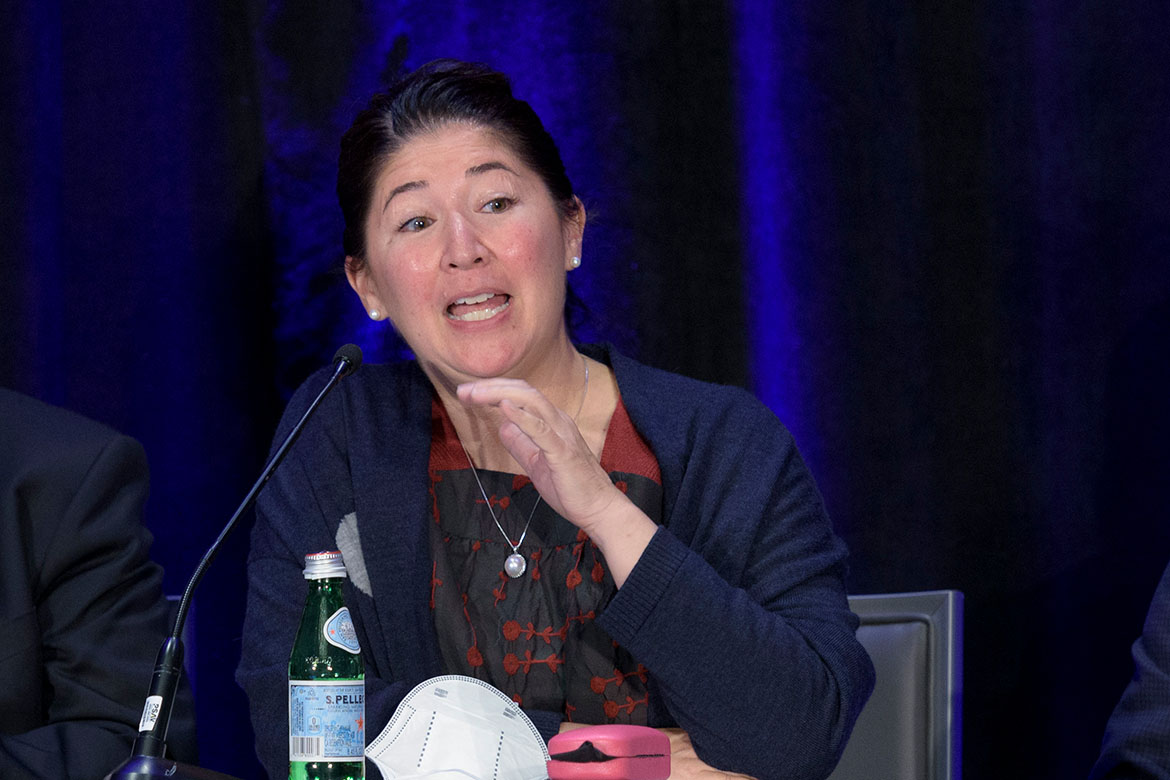Medicine requires teamwork, and so does effective medical education. Improving medical education is not a goal that can be accomplished in a silo. Collaborative efforts across institutions are necessary to create future physicians capable of flourishing in the modern health care environment.
The benefits and challenges of collaboration were discussed during a recent AMA Accelerating Change in Medical Education Consortium meeting. Three particular areas of focus—addressing workforce needs, teaching the EHR and honing the master adaptive learner model—were covered in depth. Here’s a look at how faculty at separate institutions are learning the value of teamwork.
Sharing success, frustrations
Medical education leaders at the University of North Carolina School of Medicine (UNC), Oregon Health & Science University (OHSU), and University of California, Davis (UC Davis) School of Medicine run two separate programs that share the aim of creating physicians committed to working in rural areas and areas with limited access to health care.
UNC’s Fully Integrated Readiness for Service Training and the California Oregon Medical Partnership to Address Disparities in Rural Education and Health run by OHSU and UC Davis are rooted in mentorship, identifying the right medical students during the admissions process and pairing them with mentors who can help them realize a career path working in areas that are in need of physicians. In working together, the two programs have been able to collaborate on research, focus on what trainees and faculty members need to succeed and share the challenges they encounter.
“Through the work with UNC we have been able to sit quietly in a private room, tell our worst secrets and try to understand what’s the workaround and how we can do it better,” said Tonya Fancher, MD, MPH, the associate dean for workforce innovation and community engagement at UC Davis. “It’s been an incredible opportunity to learn, to grow and to do research together.”
When one of the programs has a success, Dr. Fancher said, it offers an opportunity to improve the other.
“I want to learn more about what they're doing and figure out: How do we enhance, even more, the work that we're doing?”
Read why greater exposure to rural medicine in residency training is the recipe for creating more rural physicians.
Adapting on the fly
The Regenstrief Institute at Indiana University (IU) School of Medicine has been at the forefront of training medical students on EHR. Its EHR Clinical Learning Platform was at the heart of a collaboration with the University of Connecticut (UConn) School of Medicine.
The initial goal of the collaboration was to create clinical content, using real patient data, that is better rooted in the needs of the community in which UConn treats patients.
But medical students had a difficult time with the fragmented and sometimes conflicting information in the electronic health record. The necessary adjustment required a shared understanding between the two institutions.
“These struggles were hard for us initially, because we weren't delivering on the project goals as imagined,” said Bradley Allen, MD, PhD, senior associate dean for medical student education at IU. “But then we realized that that's OK. We figured out ways to work with one another to problem-solve, and come forward with solutions and products that are still valuable and serve some important goals that we'd initially intended, but not all of them. Continuing to work with UConn and other partners using the teaching EHR revealed ways we can effectively use this platform for training needs not initially anticipated, as well as for those that we've planned on from the beginning.”
One thing that has stood out to David Henderson, MD, who is associate dean for multicultural and community affairs at UConn and is helping to spearhead the EHR curriculum at his institution, is the importance of evolving expectations during a partnership.
“We often lack patience with ourselves,” he said. “We function with certain expectations—and patience is important as well as having some respect for the value of evolution. We tend to view progress as sort of a linear force that moves in one direction, like gravity. But progress wanders. It meanders. It goes back and forth and where one starts is not necessarily where one ends up.”
The AMA Accelerating Change in Medical Education initiative works across the continuum with visionary partners to create bold innovations. Learn more about the initiative’s efforts in undergraduate and graduate medical education, transformative resources for learners and educators, and national events that disseminate innovations to better train physicians to meet the needs of patients today and in the future.




